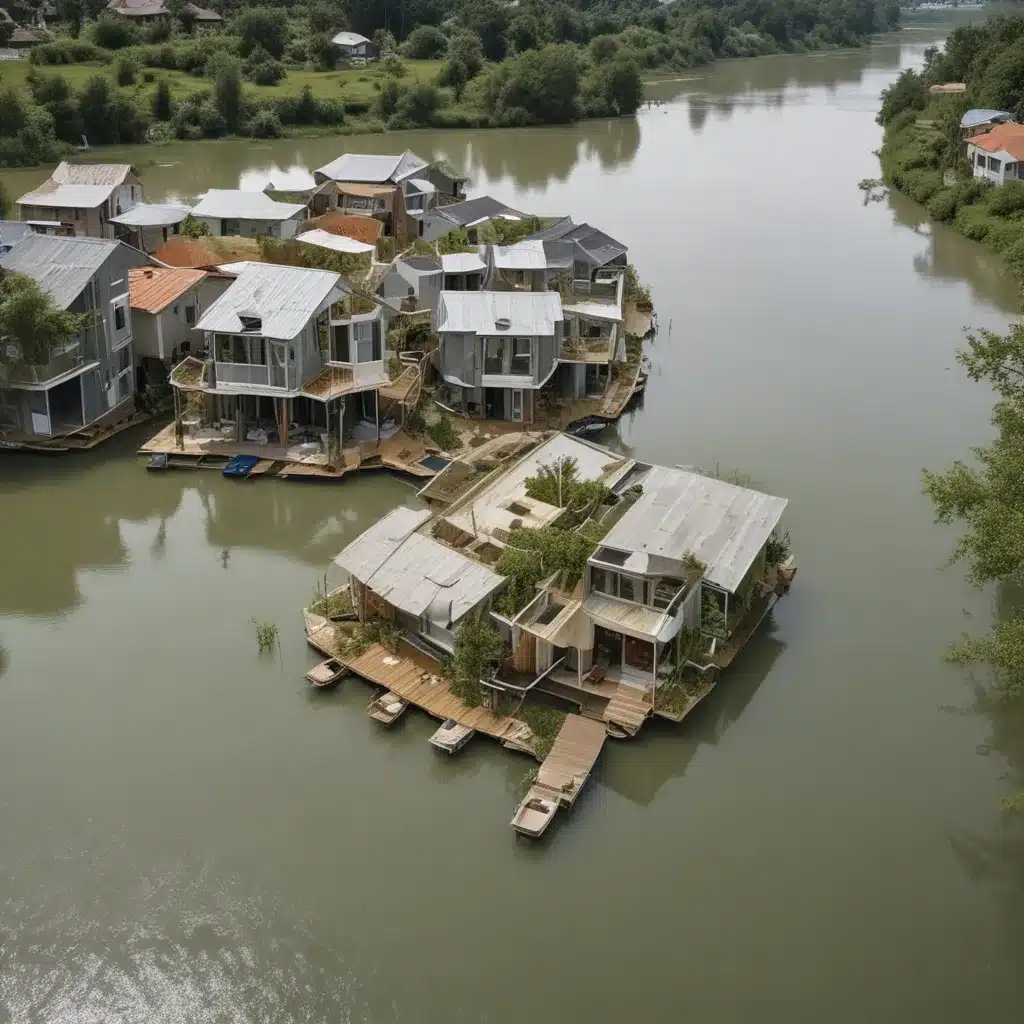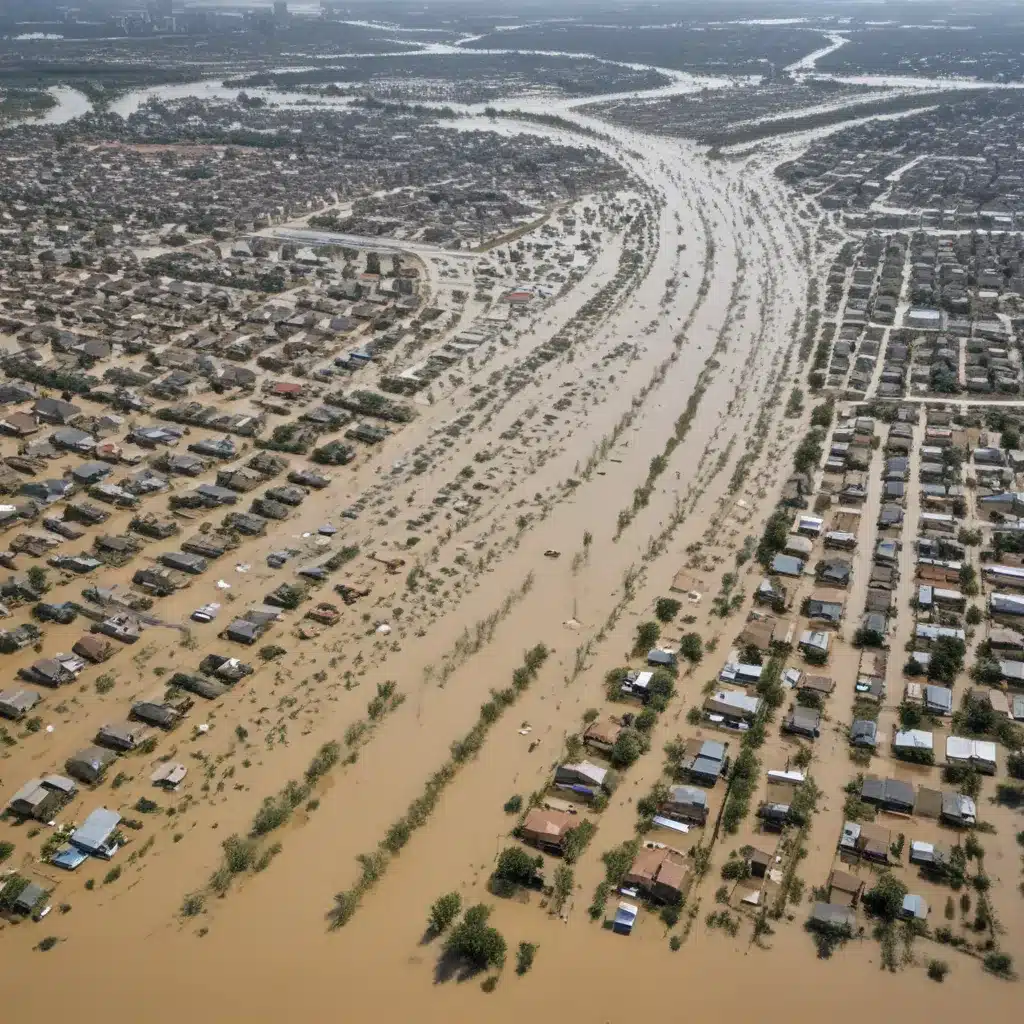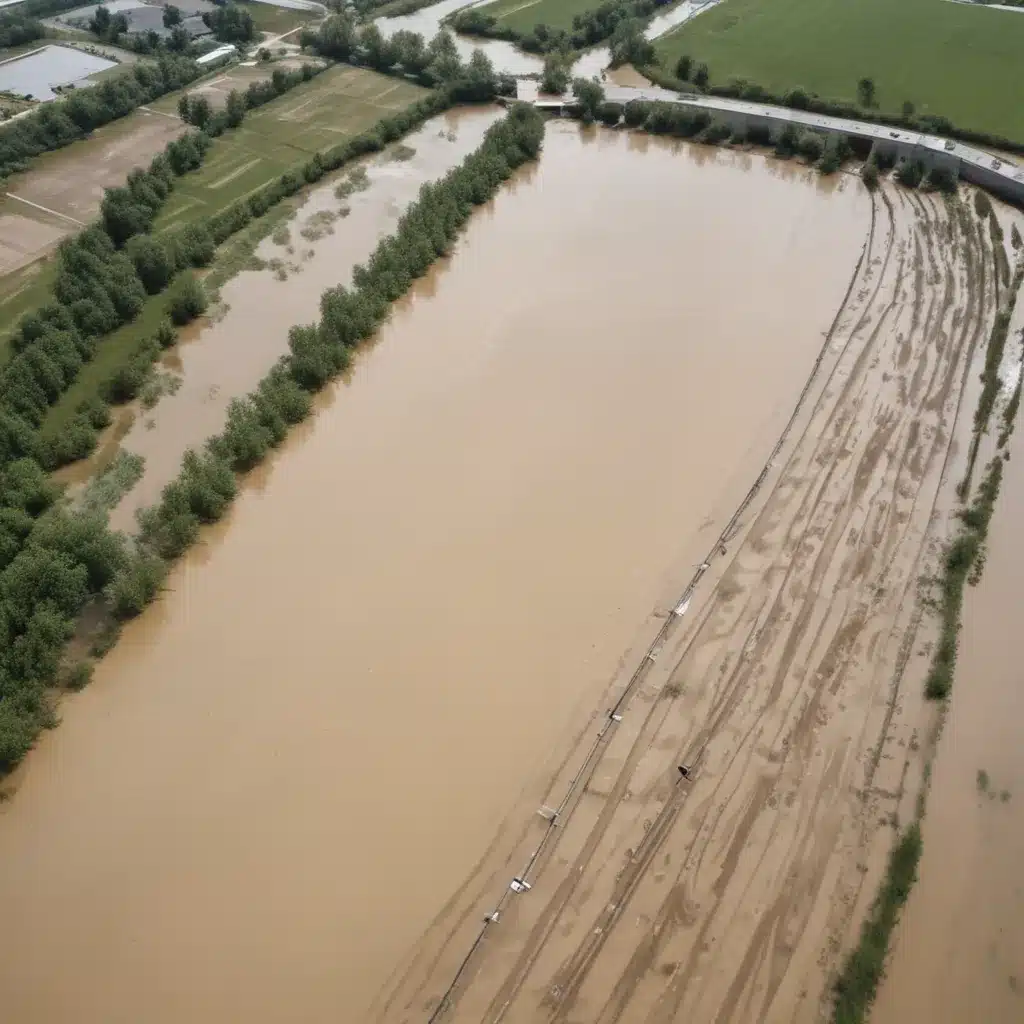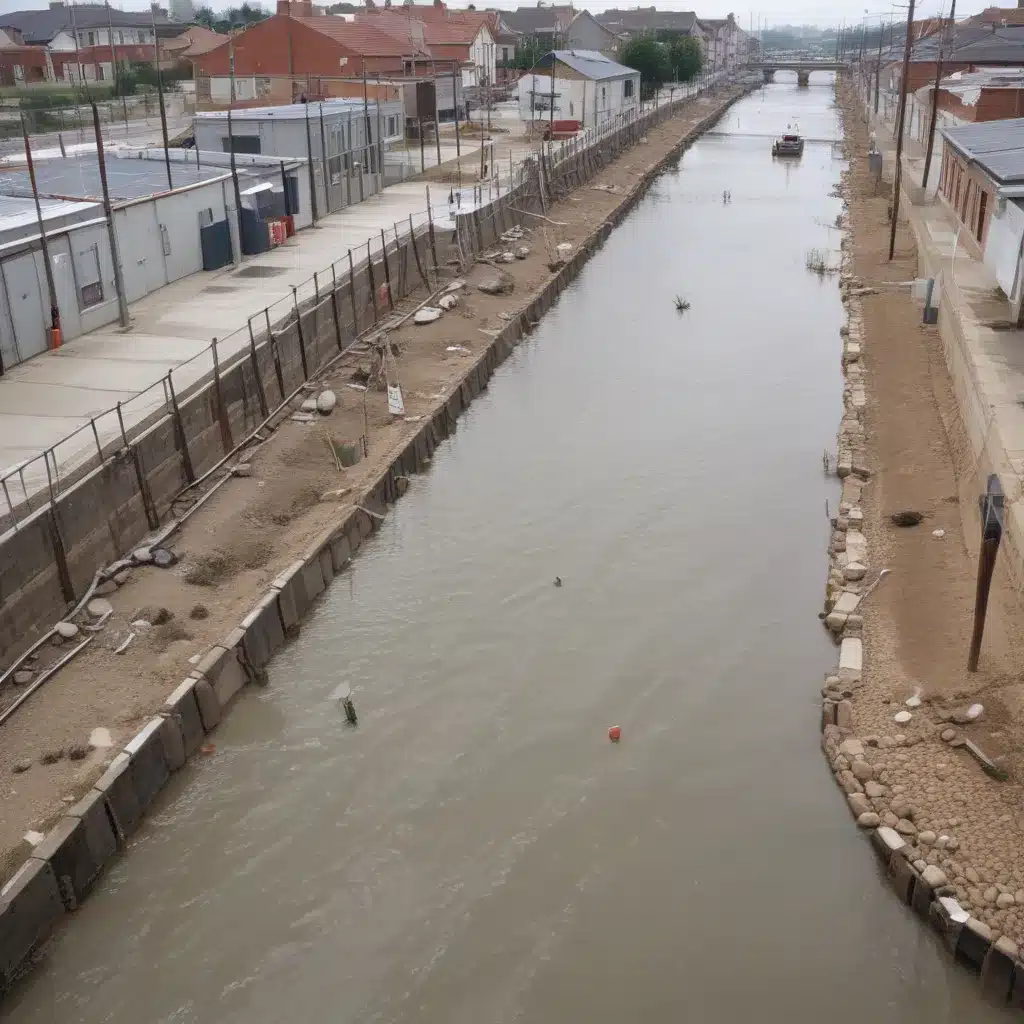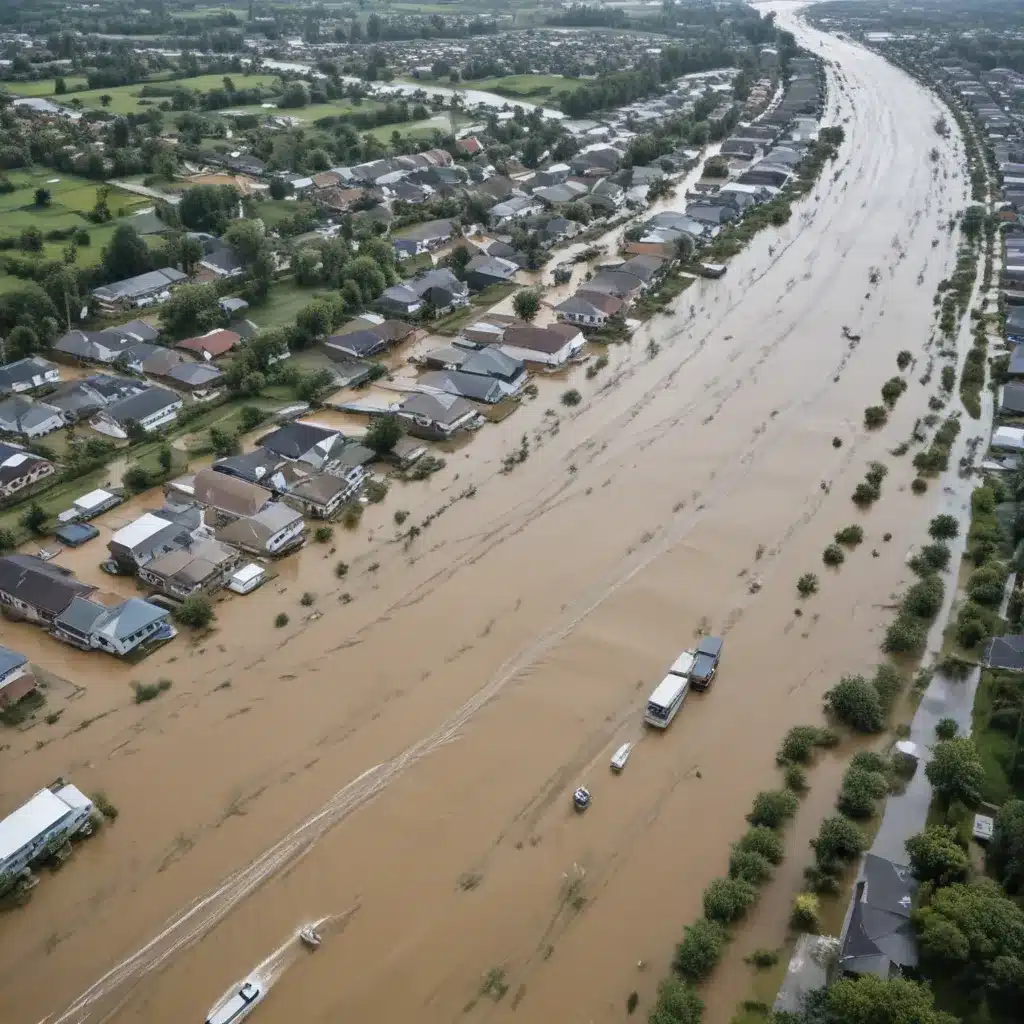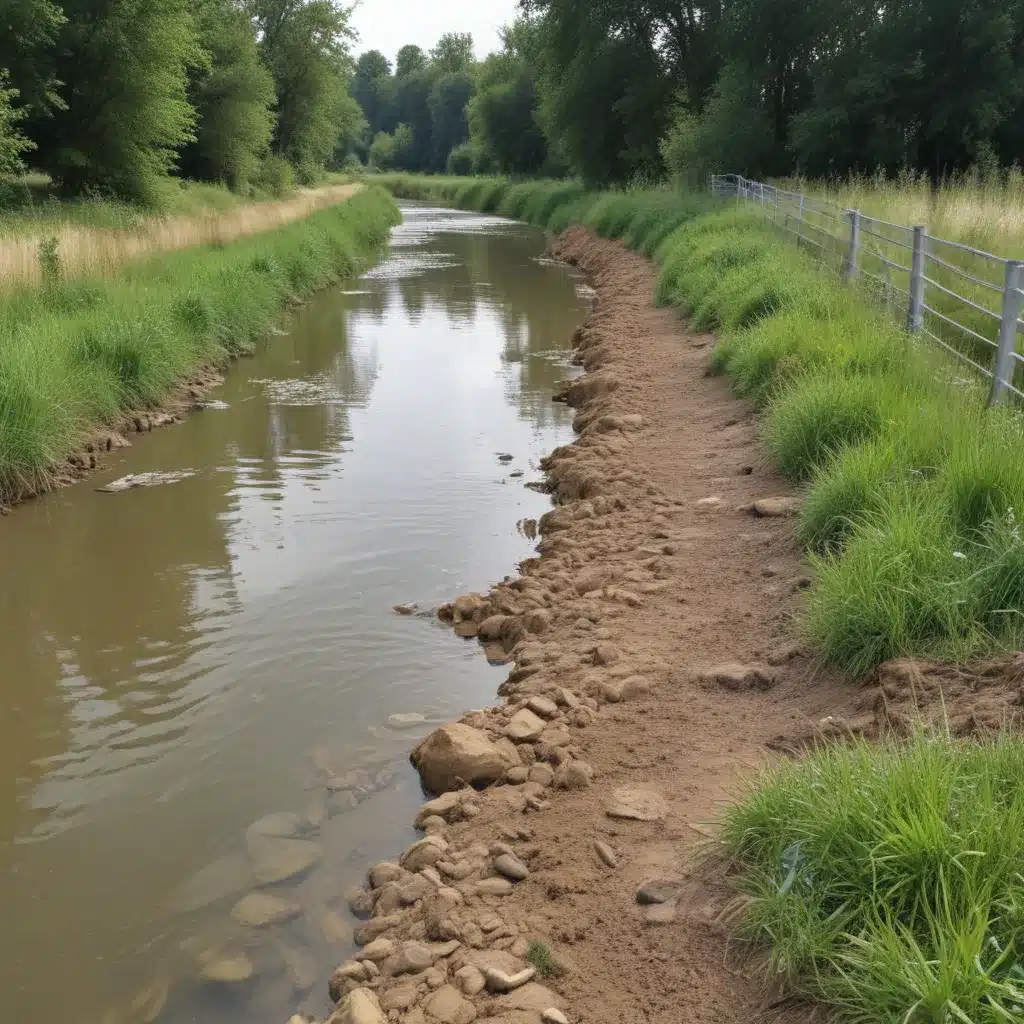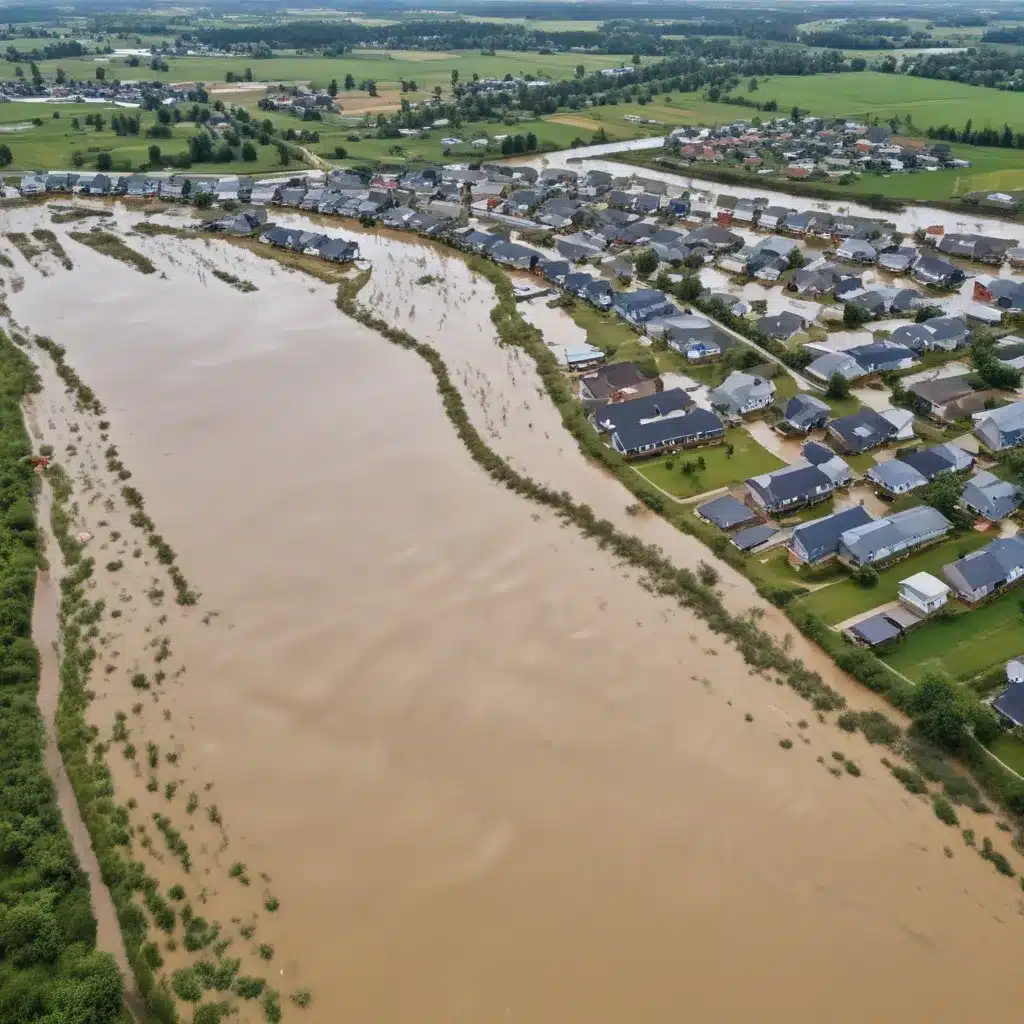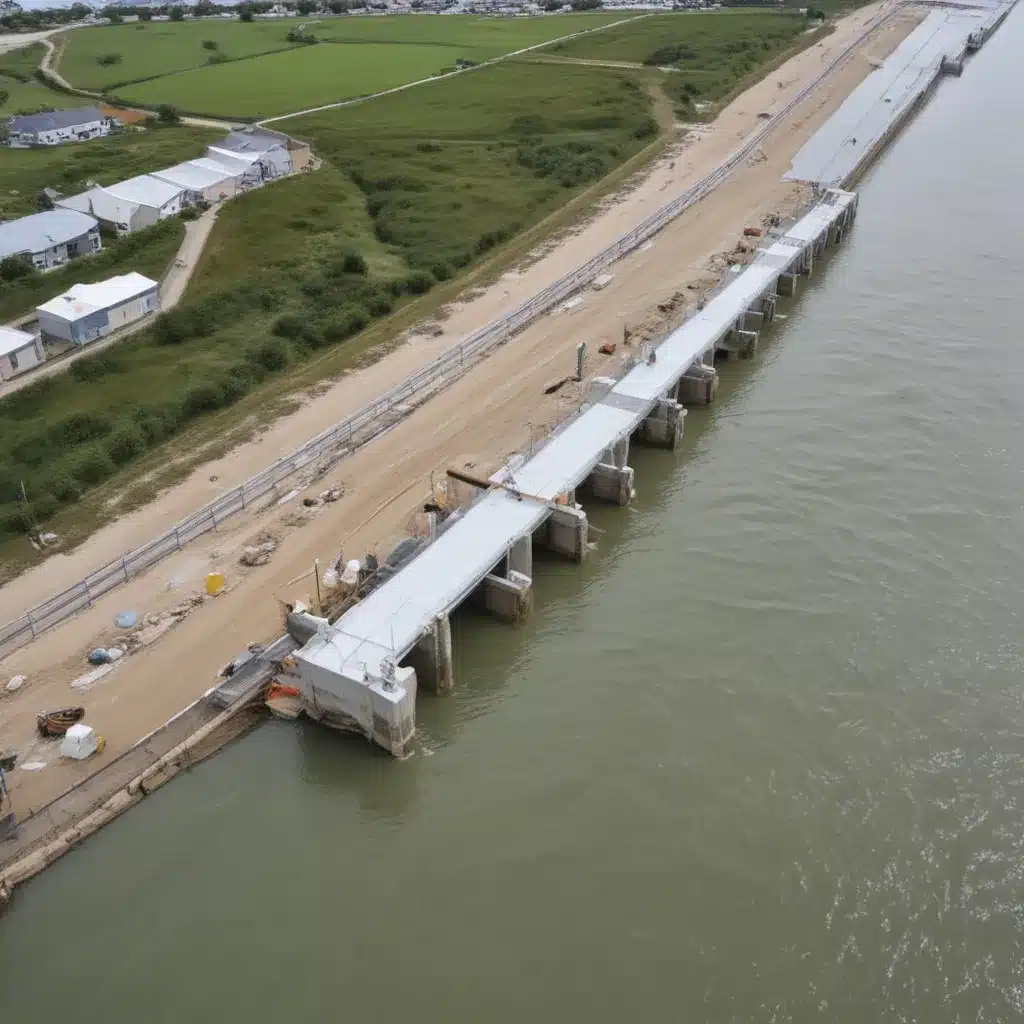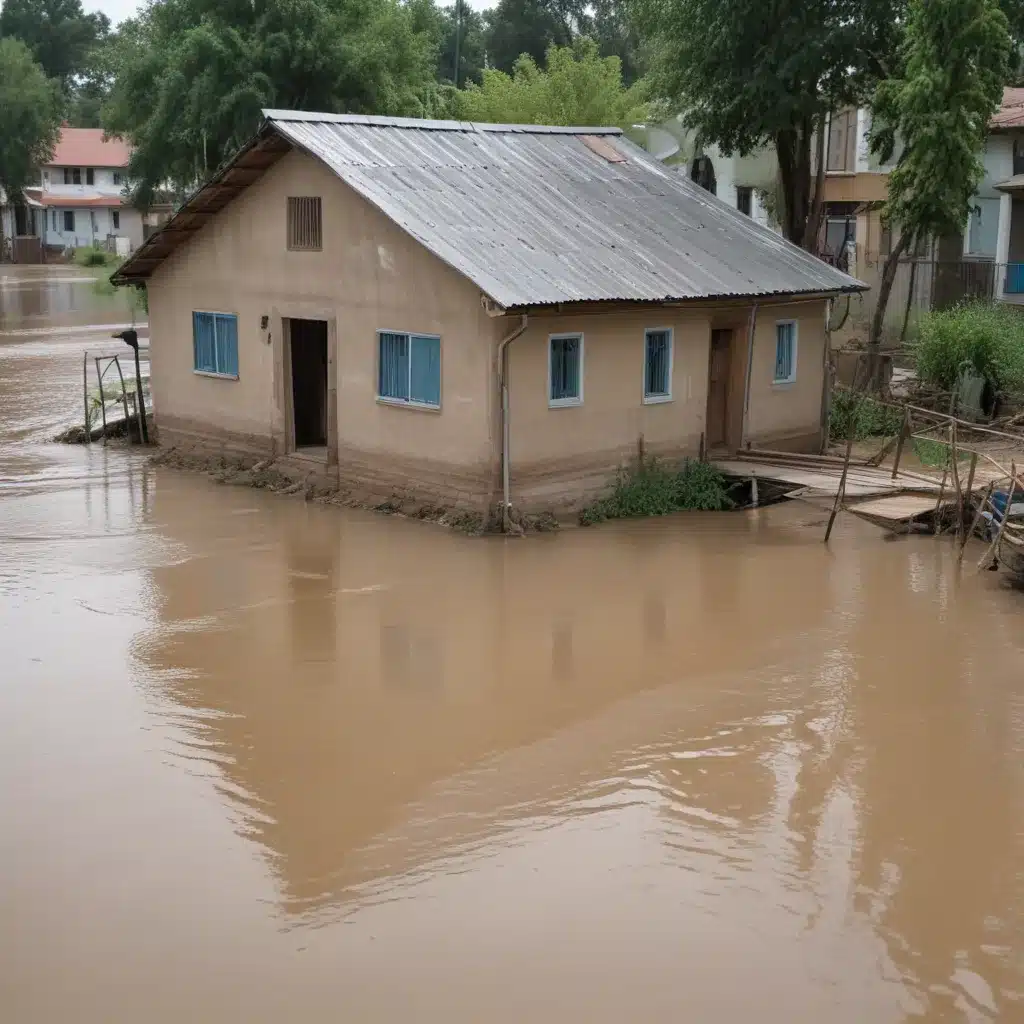Public-Private Partnerships in flood risk management policies have gained significant attention in recent years. These collaborations bring together the expertise and resources of both the public and private sectors to tackle the increasingly complex challenges posed by flooding. As we explore the intricacies of these partnerships, we will uncover the importance of such alliances, delve into the benefits they offer, examine the key challenges they face, and analyze the effectiveness of their implementation. Join us on this journey as we navigate through the world of Public-Private Partnerships in flood risk management policies, uncovering success stories and valuable lessons along the way.
Key Takeaways
- Public-private partnerships enhance the ability to address challenges posed by flooding.
- Stakeholder collaboration is essential for effective flood risk management policies.
- Diversifying funding sources and exploring alternative financing options are crucial for long-term success.
- Government plays a crucial role in facilitating and supporting public-private partnerships for flood resilience.
Importance of Public-Private Partnerships
Public-private partnerships play a crucial role in effectively managing flood risks. The benefits of public-private collaboration are numerous and can greatly enhance our ability to address the challenges posed by flooding. By bringing together the strengths and resources of both the public and private sectors, we can foster innovation and create more resilient communities.
One of the key benefits of public-private collaboration in flood risk management is the ability to leverage the expertise and experience of both sectors. The public sector brings a deep understanding of policy and regulation, while the private sector offers technical knowledge and innovative solutions. By working together, we can develop comprehensive strategies that combine the best practices from both sides, resulting in more effective flood risk management measures.
Community engagement is another critical aspect of public-private partnerships in flood risk management. Involving the community in decision-making processes ensures that their needs and concerns are taken into account. This engagement fosters a sense of ownership and empowerment among community members, making them more willing to actively participate in flood prevention and response efforts. Moreover, the private sector can contribute by engaging with local communities and providing financial resources, technical expertise, and support for community-led initiatives.
Furthermore, public-private partnerships can also facilitate the sharing of resources and costs. Flood risk management requires significant financial investment, and by pooling resources, both sectors can achieve more with limited budgets. This collaboration can also lead to the development of innovative financing mechanisms, such as insurance schemes or public-private funding models, which can provide sustainable funding for flood risk management projects.
Understanding Flood Risk Management Policies
Let’s begin by understanding the key points of flood risk management policies. Firstly, it is crucial to assess the effectiveness of these policies to ensure they are achieving their intended goals. Secondly, the benefits of stakeholder collaboration cannot be overlooked, as involving various parties can lead to more comprehensive and successful flood risk management strategies. Lastly, the allocation of funding and resources is a critical aspect of these policies, as sufficient financial support and appropriate resource allocation are essential for effective flood risk management.
Policy Effectiveness Assessment
Assessing the effectiveness of flood risk management policies is crucial for ensuring their successful implementation and reducing the impact of flooding on communities. Policy evaluation and data analysis play vital roles in this assessment process. By conducting a thorough policy evaluation, we can identify the strengths and weaknesses of existing flood risk management policies. This evaluation enables us to analyze the data collected from various sources, such as historical flood records, climate models, and socioeconomic data, to gain a comprehensive understanding of flood risk and vulnerability. Through advanced data analysis techniques, we can identify patterns, trends, and potential areas for improvement in our policies. This information can then be used to refine existing policies, develop new strategies, and implement innovative approaches to flood risk management. Effective policy assessment is essential for fostering innovation and ensuring the resilience of communities in the face of increasing flood risks.
Stakeholder Collaboration Benefits
By working collaboratively with stakeholders, we can gain a deeper understanding of flood risk management policies and their benefits for communities. Stakeholder engagement and community involvement are crucial elements in developing effective flood risk management strategies. When stakeholders, including government agencies, private organizations, and local communities, come together, they bring diverse perspectives and expertise to the table. This collaboration leads to innovative solutions and better decision-making processes.
To illustrate the benefits of stakeholder collaboration, let’s examine it in a table:
| Stakeholder Collaboration Benefits | Examples |
|---|---|
| Enhanced knowledge sharing | Workshops and seminars where experts and community members exchange information and experiences. |
| Improved policy implementation | Stakeholders actively participating in the implementation of flood risk management policies. |
| Increased community resilience | Communities becoming more prepared and resilient to flood events through collective efforts. |
| Greater transparency and accountability | Open dialogue and involvement of stakeholders lead to more transparent decision-making processes. |
| Sustainable long-term solutions | Collaboration ensures that flood risk management policies are effective and sustainable over time. |
Through stakeholder collaboration, we can foster innovation, develop comprehensive flood risk management policies, and create resilient communities that can effectively respond to and mitigate flood risks.
Funding and Resource Allocation
To effectively understand flood risk management policies, it is essential to examine the allocation of funding and resources. Resource mobilization and investment strategies play a crucial role in implementing effective flood risk management measures. In order to address the increasing frequency and severity of floods, innovative approaches are needed to secure adequate funding for these policies. One potential solution is to encourage public-private partnerships, where both sectors contribute resources and expertise. This collaboration can lead to more efficient resource allocation and the development of sustainable funding mechanisms. Additionally, exploring alternative financing options such as insurance schemes or green infrastructure investments can also help diversify funding sources and reduce the burden on public budgets. By adopting innovative funding and resource allocation strategies, we can ensure the long-term success and resilience of flood risk management policies.
Benefits of Collaboration in Flood Risk Management
Collaboration among stakeholders in flood risk management brings numerous benefits. By working together, we can leverage our collective knowledge and resources to develop innovative solutions that address the challenges posed by floods. Here are some of the key benefits of collaboration in flood risk management:
- Enhanced evaluation methods: Collaboration allows us to pool our expertise in evaluating flood risks. By combining different perspectives and approaches, we can develop robust and comprehensive evaluation methods that account for a wide range of factors, such as climate change projections, land use patterns, and infrastructure vulnerabilities. This enables us to make more informed decisions and allocate resources effectively to mitigate flood risks.
- Improved data sharing: Collaboration facilitates the sharing of data among stakeholders. By sharing data related to flood risks, such as historical flood records, hydrological models, and vulnerability assessments, we can gain a more accurate understanding of the extent and severity of flood risks. This shared knowledge enables us to develop more targeted and effective flood risk management strategies.
- Increased innovation: Collaboration fosters a culture of innovation in flood risk management. When stakeholders from diverse backgrounds come together, they bring different perspectives, ideas, and expertise. This creative exchange of ideas often leads to the development of innovative approaches and technologies that can enhance flood risk management. By collaborating, we can tap into the collective intelligence of various stakeholders and drive forward-thinking solutions.
Key Challenges in Implementing PPPs
Implementing Public-Private Partnerships (PPPs) in flood risk management poses several key challenges. While the collaboration between the public and private sectors can bring about innovative solutions, there are certain obstacles that need to be addressed for successful implementation. In this section, we will explore these challenges and discuss strategies for overcoming them.
| Challenges | Impact | Implementation Strategies |
|---|---|---|
| Funding constraints | Insufficient financial resources hinder the development and maintenance of flood risk management projects. | – Seek alternative funding sources such as grants, loans, or crowdfunding. – Explore innovative financing mechanisms like green bonds or public-private investment partnerships. |
| Divergent interests | Public and private entities may have conflicting objectives, leading to challenges in decision-making and resource allocation. | – Foster open communication and transparency to bridge the gap between stakeholders. – Establish a shared vision and common goals through effective collaboration and negotiation. |
| Legal and regulatory complexities | Navigating through complex legal frameworks and regulations can slow down the implementation process and increase costs. | – Conduct a thorough assessment of legal requirements and identify potential barriers in advance. – Streamline approval processes and establish clear guidelines for compliance. |
| Risk allocation and management | Allocating and managing risks can be a daunting task, as different parties may have varying risk tolerances and capacities. | – Conduct a comprehensive risk assessment to identify potential hazards and vulnerabilities. – Develop risk-sharing mechanisms and insurance arrangements to mitigate potential losses. |
To overcome these challenges, innovative implementation strategies are crucial. By adopting alternative funding sources, fostering collaboration, streamlining regulatory processes, and implementing risk-sharing mechanisms, the potential of PPPs in flood risk management can be fully realized. It is essential to address these challenges proactively and develop innovative solutions that ensure the resilience and sustainability of our communities in the face of increasing flood risks.
Case Studies of Successful PPPs in Flood Risk Management
Several successful case studies demonstrate the effectiveness of public-private partnerships (PPPs) in flood risk management. These case studies serve as successful examples of how collaboration between the public and private sectors can lead to innovative solutions in managing flood risks. Here are three notable examples:
- The Thames Barrier, London: The Thames Barrier is a world-renowned flood defense system in London, UK. Built in collaboration between the UK government and private engineering firms, this PPP project has successfully protected the city from severe flooding since its completion in 1982. The partnership allowed for the utilization of private sector expertise and resources, resulting in an efficient and sustainable flood risk management solution.
- The Room for the River Program, Netherlands: The Room for the River program is an innovative approach to flood risk management in the Netherlands. The program involves close collaboration between the government, local communities, and private stakeholders. By creating more space for rivers to flow and implementing sustainable flood mitigation measures, the program has successfully reduced flood risks and increased the resilience of the Dutch landscape.
- The Red River Floodway, Canada: The Red River Floodway, also known as “Duff’s Ditch,” is a flood control channel in Manitoba, Canada. This project, a partnership between the provincial government and private contractors, has effectively protected the city of Winnipeg from devastating floods for decades. The success of this PPP lies in its long-term maintenance and ongoing collaboration between the public and private sectors.
These case studies highlight the importance of public-private partnerships in flood risk management. By pooling resources, expertise, and innovative approaches, these partnerships have successfully implemented sustainable and effective flood risk management strategies. These examples serve as inspiration for future collaborations and demonstrate the potential for innovation in addressing the challenges of flood risk management.
Role of Government in PPPs for Flood Resilience
As we explore the role of government in PPPs for flood resilience, we must first acknowledge the crucial regulatory role it plays. Government agencies are responsible for establishing and enforcing regulations that ensure the safety and effectiveness of flood risk management projects. Additionally, government funding and financial support are essential in facilitating the implementation of these projects, as they often require significant investment. Lastly, effective collaboration and coordination between government entities and private partners are necessary to ensure the success of PPPs in flood resilience.
Government’s Regulatory Role
Our government plays a crucial regulatory role in facilitating public-private partnerships (PPPs) for flood resilience. By actively participating in the development and implementation of flood risk management policies, the government ensures that PPPs operate within a framework that promotes innovation and effectiveness. Here are three ways in which the government’s regulatory role contributes to the success of PPPs in flood resilience:
- Policy Development: The government sets clear guidelines and standards for flood risk management, establishing a foundation for PPPs to operate. These policies create a framework that encourages innovation and collaboration between the public and private sectors.
- Compliance and Oversight: The government monitors and enforces compliance with established policies, ensuring that PPPs adhere to the required standards. Through regular inspections and audits, the government maintains accountability and quality assurance in flood resilience projects.
- Stakeholder Engagement: The government facilitates dialogue and collaboration among various stakeholders, including communities, businesses, and NGOs. By fostering communication and coordination, the government promotes a holistic approach to flood resilience, maximizing the collective expertise and resources of all parties involved.
Through its regulatory role, the government ensures that PPPs for flood resilience are effective, innovative, and responsive to the needs of the community.
Funding and Financial Support
The government’s crucial role in facilitating public-private partnerships for flood resilience extends to providing funding and financial support. To address the challenges of implementing these partnerships, innovative funding models are being explored. These models aim to attract private investment while ensuring the sustainability and effectiveness of flood risk management policies. One such model is the use of outcome-based funding, where payments are made based on the achievement of predefined outcomes. This incentivizes private sector participation and ensures that funds are allocated efficiently, resulting in better flood resilience outcomes. Additionally, the government can explore the use of green bonds and other sustainable finance instruments to raise funds for flood resilience projects. By leveraging these innovative funding models, public-private partnerships can overcome financial barriers and work towards effective flood risk management policies.
Collaboration and Coordination
Collaboration and coordination play a crucial role in the government’s facilitation of public-private partnerships for flood resilience. To effectively address the challenges posed by floods, the government needs to work hand in hand with both the public and private sectors. Here are three key aspects of collaboration and coordination that are vital for the success of these partnerships:
- Public-private collaboration: By fostering collaboration between public and private entities, the government can tap into the expertise and resources of both sectors. This enables the development of innovative solutions and the sharing of best practices, ultimately leading to more effective flood risk management policies.
- Cross-sector coordination: Given the complex nature of flood resilience, coordination across multiple sectors is crucial. The government must facilitate coordination among various stakeholders such as government agencies, infrastructure developers, insurance companies, and community organizations. This ensures that efforts are aligned and resources are maximized.
- Information sharing and communication: Open and transparent communication is essential for successful collaboration and coordination. The government should establish mechanisms for sharing relevant data, insights, and lessons learned from past experiences. This enables all stakeholders to make informed decisions and contribute to the development of comprehensive flood resilience strategies.
Role of the Private Sector in PPPs for Flood Resilience
Private sector involvement in public-private partnerships (PPPs) plays a crucial role in enhancing flood resilience. The private sector brings innovation, technology, and innovative funding models to PPPs, making them more effective in managing flood risks.
One of the key contributions of the private sector is the role of technology in PPPs. Technology has revolutionized flood risk management by providing real-time data, advanced modeling techniques, and early warning systems. Private sector companies have the expertise and resources to develop and implement these technologies, making them valuable partners in PPPs. For example, remote sensing technologies can provide accurate and timely information on flood events, enabling better decision-making and response planning. This technological expertise can greatly enhance the efficiency and effectiveness of flood resilience efforts.
In addition to technology, the private sector also brings innovative funding models to PPPs. Traditional funding sources for flood risk management, such as government budgets and grants, are often limited and insufficient. Private sector involvement can help bridge this funding gap by introducing innovative financing mechanisms, such as public-private investment funds, impact bonds, and insurance products. These models can attract private capital and ensure a sustainable funding stream for flood resilience projects. By leveraging private sector resources and expertise, PPPs can achieve better outcomes in terms of flood risk reduction and long-term resilience.
Best Practices for Developing Effective PPPs
Developing effective public-private partnerships (PPPs) requires careful planning and coordination between stakeholders. To ensure successful collaboration, several best practices can be followed:
- Clear and Transparent Communication: Open and honest communication between all parties involved is crucial for the success of PPPs. This includes sharing information, goals, and expectations, as well as addressing any challenges or concerns that may arise. Transparency helps build trust and fosters a collaborative environment.
- Establishing Mutual Goals and Objectives: It is essential to align the goals and objectives of all stakeholders involved in the PPP. This ensures that everyone is working towards a common purpose and helps in avoiding conflicts or misunderstandings. Defining shared objectives will enable effective decision-making and resource allocation.
- Regular Evaluation and Monitoring: Implementing a robust evaluation framework is key to assessing the progress and effectiveness of the PPP. Regular monitoring and evaluation enable stakeholders to identify potential issues early on and make necessary adjustments to improve outcomes. Various evaluation methods can be employed, such as cost-benefit analysis, performance metrics, and stakeholder feedback.
Ensuring Accountability and Transparency in PPPs
To ensure accountability and transparency in public-private partnerships (PPPs), it is essential to establish clear communication channels and reporting mechanisms. These accountability mechanisms and transparency measures play a crucial role in maintaining the integrity of PPPs and building trust between the public and private sectors.
One effective way to ensure accountability is through the establishment of performance-based contracts. These contracts clearly define the roles and responsibilities of each party involved and set measurable performance indicators to assess the success of the partnership. By regularly monitoring and evaluating these indicators, it becomes easier to hold both the public and private sectors accountable for their actions and ensure that the agreed-upon objectives are being met.
Transparency measures are equally important in promoting accountability in PPPs. This can be achieved through the implementation of open and accessible reporting mechanisms. Regular reporting of project progress, financial performance, and risk management strategies allows stakeholders and the public to have a clear understanding of the partnership’s operations. Additionally, public consultations and engagement sessions can be conducted to gather feedback and ensure that the interests of all parties involved are being considered.
To further emphasize the importance of accountability and transparency in PPPs, the following table highlights key accountability mechanisms and transparency measures:
| Accountability Mechanisms | Transparency Measures |
|---|---|
| Performance-based contracts | Regular reporting of project progress |
| Monitoring and evaluation of performance indicators | Financial performance disclosure |
| Clear definition of roles and responsibilities | Risk management strategies disclosure |
| Stakeholder engagement and public consultations | Accessible reporting mechanisms |
Financing Mechanisms for PPPs in Flood Risk Management
Let’s explore the financing mechanisms for public-private partnerships (PPPs) in flood risk management. We will discuss funding options available for PPPs, such as government grants, loans, and private investments. Additionally, we will examine financial incentives that can encourage stakeholders to participate in these partnerships, as well as risk-sharing mechanisms to ensure a fair distribution of responsibilities and costs.
Funding Options for PPPs
We can explore various funding options for Public-Private Partnerships (PPPs) in flood risk management. To promote innovation in financing mechanisms, we can consider the following:
- Alternative Financing Models:
- Green Bonds: Issuing bonds to raise funds for flood risk management projects, with the proceeds dedicated to sustainable and resilient infrastructure development.
- Impact Investing: Attracting private investors who seek both financial returns and positive environmental and social outcomes, by offering them the opportunity to invest in flood risk management projects.
- Social Impact Bonds: Encouraging private investors to provide upfront capital for flood risk management initiatives, with returns linked to the achievement of predetermined outcomes.
- Crowdfunding Opportunities:
- Online Platforms: Creating crowdfunding campaigns to raise funds from individuals and communities for specific flood risk management projects.
- Donations and Sponsorships: Encouraging individuals, businesses, and organizations to contribute financially to flood risk management efforts through donations or sponsorships.
- Matching Grants: Collaborating with public entities to offer matching grants for crowdfunding campaigns, thereby leveraging public and private funds.
These alternative financing options and crowdfunding opportunities can foster innovation and enhance the financial sustainability of PPPs in flood risk management.
Financial Incentives for Stakeholders
Financial incentives play a crucial role in fostering stakeholder engagement and supporting the success of Public-Private Partnerships (PPPs) in flood risk management. Incentive programs can be an effective tool for encouraging stakeholders to actively participate and contribute to the partnership. These programs provide financial rewards or benefits to stakeholders who demonstrate exceptional performance or achieve predetermined goals in flood risk management. By offering incentives, such as tax breaks, grants, or subsidies, stakeholders are motivated to invest their time, resources, and expertise in improving flood risk management practices. Additionally, financial incentives can also be used as a means of partnership evaluation, where stakeholders are rewarded based on their level of commitment and contribution to the partnership’s objectives. This approach not only encourages continuous improvement but also ensures that the partnership remains effective and sustainable in addressing flood risk challenges.
Risk Sharing Mechanisms
After discussing the importance of financial incentives for stakeholder engagement in flood risk management, we now turn our attention to risk-sharing mechanisms, specifically the financing mechanisms for Public-Private Partnerships (PPPs) in flood risk management. These mechanisms play a crucial role in ensuring that the costs and benefits of flood risk management initiatives are shared among the public and private sectors. Here are three key financing mechanisms for PPPs in flood risk management:
- Risk Assessment: Effective risk assessment is essential for determining the level of risk associated with flood events. This information helps in determining the appropriate insurance coverage and allocating financial resources accordingly.
- Insurance Coverage: Insurance plays a critical role in managing and transferring the financial risks associated with flood events. It provides a safety net for PPPs by covering potential losses and ensuring timely recovery.
- Cost-Sharing Agreements: Collaborative agreements between the public and private sectors enable the sharing of costs and responsibilities associated with flood risk management. These agreements help in achieving a more equitable distribution of financial burdens.
Community Engagement in PPPs for Flood Resilience
Community engagement plays a pivotal role in enhancing the effectiveness of Public-Private Partnerships (PPPs) for flood resilience. To build strong and resilient communities, it is essential to involve the community in the decision-making process and promote citizen participation. By actively engaging the community in PPPs for flood resilience, we can harness the collective intelligence, creativity, and innovation of the people who are directly affected by flood risks.
Community involvement is crucial because it allows for a deeper understanding of the local context and specific needs. When citizens are allowed to participate in the planning and implementation of flood risk management policies, they bring valuable insights that can shape more effective and sustainable solutions. Their knowledge of the area, its vulnerabilities, and their own experiences can contribute to the development of innovative strategies that address the unique challenges faced by the community.
Citizen participation also fosters a sense of ownership and responsibility among community members. When people feel like active participants in the decision-making process, they are more likely to take ownership of the implemented measures and actively work towards their success. This sense of ownership leads to increased engagement and commitment, which are essential for the long-term sustainability of flood resilience initiatives.
Furthermore, involving the community in PPPs for flood resilience can help build trust and strengthen relationships between various stakeholders. By providing a platform for dialogue and collaboration, we can bridge the gap between public and private entities, as well as foster partnerships between government agencies, businesses, and community organizations. This collaboration not only improves the effectiveness of flood risk management policies but also promotes a sense of collective responsibility for flood resilience.
Evaluating the Effectiveness of PPPs in Flood Risk Management
To assess the effectiveness of Public-Private Partnerships (PPPs) in flood risk management, it is important to evaluate the outcomes and impacts of these collaborative initiatives. Evaluating the effectiveness of PPPs involves the use of various evaluation methods and data analysis techniques. Below are three key aspects to consider when evaluating the effectiveness of PPPs in flood risk management:
- Evaluation methods:
- Quantitative analysis: This involves the use of statistical techniques to measure the impact of PPPs on flood risk reduction. It includes analyzing data on flood damage, the number of flood events, and the effectiveness of specific flood risk management measures implemented through PPPs.
- Qualitative assessment: This involves gathering feedback from stakeholders involved in the PPPs, such as government agencies, private companies, and community members. Interviews, surveys, and focus groups can be used to collect insights on the perceived effectiveness of the partnerships and identify areas for improvement.
- Data analysis:
- Long-term analysis: It is crucial to assess the effectiveness of PPPs over an extended period to capture the full range of outcomes and impacts. This can involve analyzing data over several years or even decades to understand trends and patterns in flood risk reduction.
- Comparative analysis: Comparing the outcomes of PPPs with those of traditional government-led flood risk management approaches can provide insights into the added value of public-private collaboration. This analysis can help identify the strengths and weaknesses of PPPs, as well as areas where they can complement or enhance existing flood risk management strategies.
- Stakeholder engagement:
- Involving stakeholders in the evaluation process is essential for capturing diverse perspectives and ensuring that the evaluation reflects the needs and priorities of all parties involved. Engaging stakeholders can also enhance the legitimacy and credibility of the evaluation findings.
Lessons Learned From Global PPP Initiatives
Global PPP initiatives have provided valuable insights and lessons that can inform the effective implementation of flood risk management policies. By examining global PPP models and drawing lessons from international initiatives, we can identify key strategies and best practices that have proven successful in addressing flood risk.
One important lesson learned is the significance of stakeholder engagement and collaboration. Successful PPP initiatives have involved active participation from various stakeholders, including government agencies, private sector entities, and local communities. This multi-stakeholder approach ensures that diverse perspectives are considered and fosters a sense of ownership and collective responsibility for flood risk management.
Another lesson is the importance of long-term planning and flexibility. Effective PPP initiatives have recognized the dynamic nature of flood risk and have incorporated adaptive strategies that can respond to changing conditions. This includes regularly reviewing and updating risk assessments, developing flexible financing mechanisms, and implementing innovative technology solutions for early warning systems and real-time monitoring.
Furthermore, global PPP initiatives have emphasized the need for robust risk assessment and management frameworks. This involves conducting comprehensive risk assessments, identifying vulnerable areas, and implementing measures to mitigate and reduce flood risk. By adopting a proactive approach to risk management, PPP initiatives have been able to prevent or minimize flood-related damages and losses.
Lastly, successful PPP initiatives have demonstrated the importance of knowledge sharing and capacity building. By fostering collaboration and knowledge exchange among different regions and organizations, valuable lessons and experiences can be shared, enhancing the effectiveness of flood risk management policies.
Policy Recommendations for Enhancing PPPs in Flood Risk Management
As we explore policy recommendations for enhancing Public-Private Partnerships (PPPs) in flood risk management, three key points emerge funding and financing, collaboration and coordination, and the policy and regulatory framework. These points are crucial for establishing effective PPPs that can address the complex challenges of flood risk management. By focusing on these areas, we can develop strategies that promote sustainable funding, encourage collaboration among stakeholders, and create a supportive policy environment for successful PPP implementation.
Funding and Financing
What are the policy recommendations for enhancing public-private partnerships (PPPs) in flood risk management through funding and financing? To foster innovation and encourage the implementation of effective flood risk management strategies, it is crucial to explore new funding and financing options. Here are some policy recommendations for enhancing PPPs in flood risk management:
- Develop and promote public-private partnership models that encourage collaboration between government agencies, private companies, and community organizations. These models can facilitate the sharing of resources, expertise, and funding for flood risk management projects.
- Explore innovative financing solutions, such as green bonds, impact investing, and crowdfunding, to attract private investment and mobilize additional funding for flood risk management initiatives.
- Establish clear and transparent mechanisms for cost-sharing between public and private entities involved in flood risk management projects, ensuring that responsibilities and benefits are distributed fairly.
Collaboration and Coordination
To enhance public-private partnerships (PPPs) in flood risk management, effective collaboration and coordination are essential. Improving communication and data sharing between the public and private sectors can lead to more innovative and efficient flood risk management policies. By sharing information and resources, both sectors can work together to identify and prioritize areas of concern, develop comprehensive flood risk management strategies, and implement coordinated response plans.
| Communication | Data Sharing | Collaboration |
|---|---|---|
| Regular meetings | Sharing flood data | Joint research |
| Clear channels | Open access to datasets | Collaborative tools |
| Transparent | Real-time information | Coordinated actions |
| Effective | Data integration | Cross-sectoral teams |
| Efficient | Data analysis | Shared decision-making |
Policy and Regulatory Framework
To enhance public-private partnerships (PPPs) in flood risk management, it is crucial to establish a comprehensive and adaptable policy and regulatory framework. Such a framework should promote regulatory compliance and facilitate effective policy implementation. To achieve this, the following measures can be considered:
- Harmonizing and streamlining existing regulations to eliminate duplication and create consistency across jurisdictions.
- Encouraging collaboration between government agencies and private entities to ensure compliance with regulations and foster mutual understanding.
- Implementing performance-based regulations that focus on outcomes rather than prescribing specific methods, allows for innovation and flexibility.
Future Outlook for Public-Private Partnerships in Flood Risk Management
Public-private partnerships in flood risk management hold great promise for enhancing resilience and mitigating the impact of future floods. As we look towards the future, it is crucial to address the challenges that lie ahead and seek innovative solutions to ensure effective flood risk management.
One of the future challenges in flood risk management is the increasing frequency and intensity of extreme weather events due to climate change. This calls for innovative approaches that can adapt to changing conditions and provide timely responses. Public-private partnerships can play a significant role in this by leveraging the expertise and resources of both sectors to develop and implement adaptive strategies.
To illustrate the potential of public-private partnerships in flood risk management, let us consider the following table:
| Challenges | Innovative Solutions | Benefits |
|---|---|---|
| Lack of funding for infrastructure improvements | Engaging private sector investors and leveraging their financial resources for infrastructure development | Increased funding for critical infrastructure projects |
| Limited access to data and technology | Collaborating with private technology companies to develop advanced monitoring systems and predictive models | Improved flood forecasting and early warning systems |
| Inadequate coordination among stakeholders | Establishing multi-sector partnerships to promote collaboration and information sharing | Enhanced coordination and more effective flood response |


